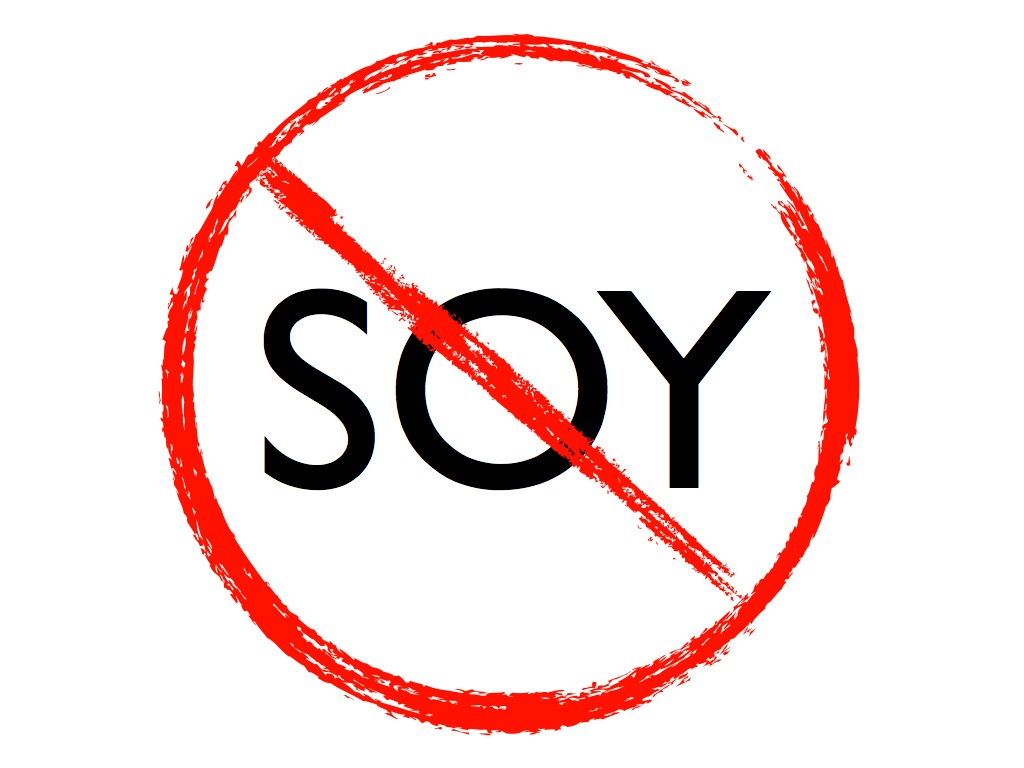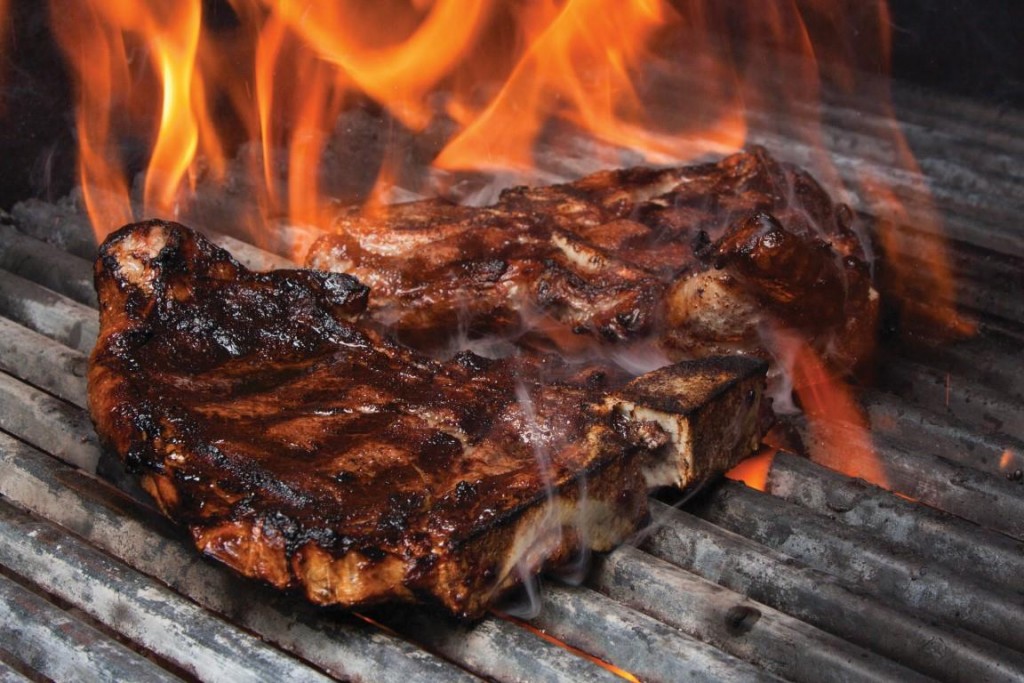Replacing saturated fat with starchy carbohydrates is probably the easiest way to get fat, sick, and heading to an early grave. Yet despite the scientific evidence and practical experience (see general population), we’re still wasting research dollars and media coverage trying to blame red meat.
As we’ve discussed in the past, the conglomerate of observational research trying to link meat consumption to heart disease and cancer is laughable. Not only because it’s nowhere close to showing that one causes the other (correlation =/= causation), but because it’s based on an extreme level of bias – using food frequency questionnaires to gather data, not adjusting for the healthy user bias, and grouping pizza toppings and hot dogs into the same category as grass-fed beef.
“Red meat intake was calculated using the frequency of consumption and portion size information of all types of beef and pork and included bacon, beef, cold cuts, ham, hamburger, hotdogs, liver, pork, sausage, steak, and meats in foods such as pizza, chili, lasagna, and stew.” –Archives of Internal Medicine, 2009

Realistically, it’s impossible to generate any reliable data off large-scale epidemiological surveys. And for every one showing meat causes cancer and heart disease, there’s just as many showing no association, or showing the opposite – not eating meat causes cancer and heart disease (1, 2, 3). A more solid approach, is using randomized controlled trials and looking at how the foods we eat affect specific biomarkers for disease (like inflammation, oxidative stress, and triglycerides). Which fortunately, there’s plenty of.
For instance, this study from 2007 in the journal Nutrition showed that:
- Replacing starchy carbohydrates (bread, pasta, rice, cereal grains) with red meat resulted in lower levels of inflammation and oxidative stress.
And similarly, this study from 1981 in the American Journal of Clinical Nutrition found:
- Greater reductions in triglycerides for red meat-eaters – that were eating significantly more saturated fat (13g/day), cholesterol (63mg/day), and calories (200kcal/day) – compared to those eating fish and poultry instead.
Yet here we are again defending red meat because a couple of plant-based MDs managed to slither their way into authoritative research positions. Leaving us with more myths to debunk, and innocent people to save, regardless of how ridiculous the claims are in the first place.
Myth #1 – Red Meat = Neu5Gc = Inflammation
If you’ve been following my writing for any amount of time, you likely recognize how goofy this statement is to begin with. Red meat causes inflammation? So what should we eat instead…bread?
Getting people to go towards meat and away from inflammatory foods is an uphill battle to begin with. And now you’re going to tell me red meat is inflammatory? Clearly, someone is getting enjoyment from confusing the general public.
…Although, I’m not what’s so funny about this…

Realistically, individuals eating a fish-dominant diet have similar inflammatory markers as those eating a red-meat-dominant diet. Which should answer any concerns, based on the fact that fish is praised as the ultimate anti-inflammatory food.
But if that isn’t enough for you, there’s also clear evidence to suggest that replacing carbohydrates with ‘more’ red meat reduces inflammation. Similar to EVERY study we’ve ever cited on here, and similar to the practical proof we see EVERY time people stop eating carbage and start embracing their inner-carnivore.
That being said, one of the potential inflammatory substances that’s commonly cited by vegans and red meat haters is something called Neu5Gc. Humans are the only mammal that no longer produces this compound (as we once did), but we have circulating Neu5Gc antibodies in our body. Thus, it’s been ‘hypothesized’ that the Neu5Gc we consume from muscle meat ends up in our tissues, signaling an attack from the antibodies in our blood and leading to chronic inflammation.
Possible? Maybe. Plausible? No. Because if this was the case, we would’ve seen chronic inflammation being an issue prior to the agricultural revolution – which we didn’t. And we would’ve seen inflammation increasing when more meat is consumed – which we don’t. In both cases, we actually see the opposite.
Myth #2 – Red Meat = Arachidonic Acid = Inflammation
The other potential source of inflammation from animal products that’s commonly cited is Arachidonic Acid (AA). Which is funny, because AA is an omega-6 fat that’s found in the polyunsaturated portion of animal products.
You know, the one fat meat is prized for being LOW in…with the red stuff being lower than them all!
But more importantly, any AA contributed by meat products is delivered in a nicely balanced package with omega-3’s. Meaning, the tissue concentrations are not lop-sided towards the inflammatory effects of AA – like they are after consuming heavy doses of straight-up polyunsaturated omega-6 fat (via vegetable oils or non-animal protein sources).

In other words, the amount of AA we get from meat provides just enough to benefit cell membranes and support the inflammatory response, without occupying omega-3 space and creating a pro-inflammatory environment. And realistically, high levels of both AA and omega-3 promote the lowest levels of inflammation (1, 2), and the highest level of health. Similar to our hunter-gatherer ancestors that consumed far more AA than us, and experienced none of the inflammatory conditions we see today.
And similar to the AA found in breast milk that is designed to help us grow and repair when we need it most!
Also worth mentioning, is that various studies have demonstrated that high-doses of AA supplementation on it’s own has no negative impact on inflammatory markers (1, 2). Not only suggesting that AA is nothing to worry about, but implying that it’s DEFINITELY safe in it’s natural form; where it’s conveniently packed next to anti-inflammatory omega-3 fats.
Myth #3 – Red Meat = TMAO = Atherosclerosis
A recent study in the journal Nature presented evidence in mice to suggest that the metabolism of the amino acid L-carnitine to TMAO accelerates atherosclerosis (aka artery clogging). Which adds to previous research the same research team posted 2 years prior in the same journal to show that high levels of TMAO equated to an increased risk of heart disease.
Yikes! Sounds scary right? Well, fortunately it’s not as straight-forward as it sounds. The initial study (from 2011) was an observational study on 6 people (5 meat-eaters and 1 vegetarian), and the second study used an isolated carnitine supplement on mice – which hardly gives us much to work with!
Realistically, TMAO is more elevated by seafood than meat.

And as this study from 1999 in the journal Food Chemical Toxicology lays out, gut health is a major contributor to TMAO levels.
But more importantly, elevated TMAO levels may not necessarily increase our risk of heart disease. Because despite the researchers best efforts, all we have is a 6-person observational study, a bunch of over-supplemented mice, and a hypothesis.
It seems a lot more likely that elevated TMAO in red-meat eaters (but not vegans and vegetarians) has more to do with the healthy-user, and food-quality bias we’ve discussed in the past. As if excess TMAO is the result of disrupted gut health, these fast-food eating, couch surfing, beer drinking unhealthy omnivores would be the perfect candidate.
Myth #4 – Red Meat = HAs, PAHs, and AGEs = Cancer
If you’re going to be concerned about something with meat-eating, HAs and PAHs would be it! Although, what’s refreshing, is that you have direct control over whether or not it becomes a problem – since it’s all based on how you cook your meat.

Heterocyclic amines (HAs) and polycyclic aromatic hydrocarbons (PAHs) are two compounds formed when meat is overcooked, and they’ve been shown to promote cancer growth in a few animal studies (1, 2). Specifically, when meat is cooked over an open flame and ends up getting charred.
Simply put, don’t do that! Cook over low heat, and pay attention when you’re BBQing!
You can also marinate your meat a few hours prior to cooking, and make a conscious effort to use acidic ingredients (like vinegar). As some evidence suggests that this practice can lower the formation of these toxic compounds almost entirely.
In any case, it’s nothing to get all bent-out-of-shape about…and there’s definitely no reason to point the finger at meat-eating. Since PAH is an environmental contaminent, and there’s actually higher levels in vegetables than most cooked meat.
Similarly, meat is commonly blamed for elevating AGEs (Advanced Glycation End Products), even though vegetarians tend to have higher levels in their blood. Which is predominantly because there are dietary factors that contribute to the internal production of AGEs (like chronically elevated blood sugar), and there’s evidence that the AGEs we consume aren’t absorbed. But also because meat is cleverly packed with natural AGEs-inhibitors, like the amino acid carnosine (1, 2).
Long story short, regardless of any disease-promoting compound found in red meat, or elevations that occurs as a result of eating meat, we have a body that’s designed to handle it. And in most cases not eating meat, is more of a cause for concern.

Simply put, we need to:
Eat food the way it’s designed, and make sure meat is a part of it.
As realistically, nature’s had our back since we started eating meat millions of years ago, and it will continue to have our back as long as we keep prioritizing it.
Stay Lean!
Coach Mike
RELATED ARTICLES:
Why Grass-Fed Meat Is Worth It
